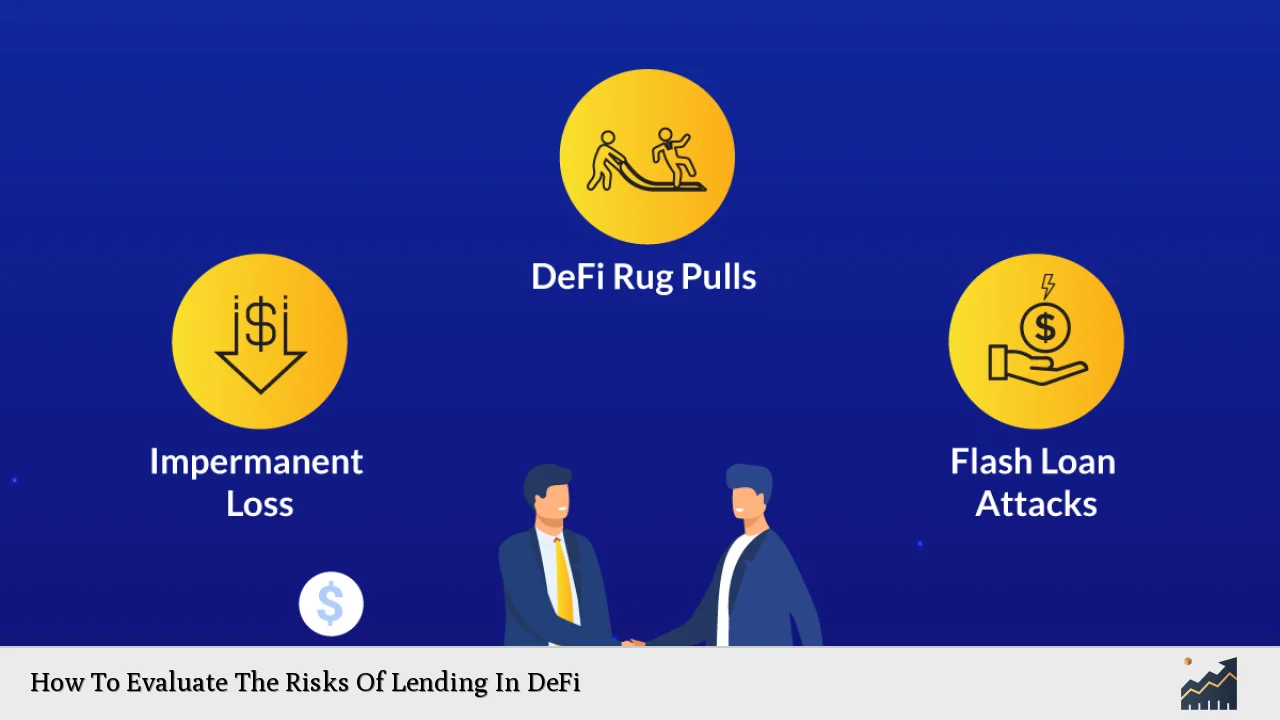Decentralized Finance (DeFi) has revolutionized the financial landscape, offering innovative solutions for lending and borrowing without traditional intermediaries. However, this new paradigm comes with its own set of risks that investors must carefully evaluate. Understanding these risks is crucial for individuals and institutions looking to participate in DeFi lending. This article provides a comprehensive analysis of how to evaluate the risks associated with lending in DeFi, focusing on market trends, implementation strategies, risk considerations, regulatory aspects, and future outlook.
| Key Concept | Description/Impact |
|---|---|
| Smart Contract Risks | The immutability of smart contracts can lead to permanent vulnerabilities if coding errors are present, potentially resulting in significant financial losses. |
| Market Volatility | The highly volatile nature of cryptocurrencies can lead to rapid changes in collateral value, increasing the risk of liquidation for borrowers. |
| Liquidity Risks | DeFi platforms may experience liquidity crunches during market downturns, making it difficult for lenders to withdraw funds or for borrowers to meet obligations. |
| Regulatory Risks | The evolving regulatory landscape poses uncertainties for DeFi platforms, potentially impacting their operations and compliance requirements. |
| Interconnectedness of Protocols | The high level of interconnectedness among DeFi protocols means that issues in one platform can lead to cascading failures across others. |
| Illicit Activity Risks | DeFi platforms can be exploited for money laundering and other illicit activities due to their pseudo-anonymous nature and lack of robust KYC measures. |
Market Analysis and Trends
The DeFi market has witnessed explosive growth, with the total value locked (TVL) in DeFi protocols surpassing $100 billion in mid-2024. This growth is driven by increased adoption of blockchain technology and a growing interest in decentralized applications (dApps). Key trends include:
- Increased Institutional Participation: Traditional financial institutions are beginning to engage with DeFi, driven by regulatory clarity and the potential for innovative financial products.
- Expansion of Collateral Types: There is a growing trend towards accepting a wider range of assets as collateral, including real-world assets (RWAs) and non-fungible tokens (NFTs).
- Emergence of Liquid Staking: Liquid staking protocols allow users to stake their assets while retaining liquidity through the issuance of liquid tokens.
These trends indicate that DeFi is becoming more integrated with traditional finance, creating new opportunities and challenges for risk evaluation.
Implementation Strategies
To effectively evaluate risks in DeFi lending, investors should adopt several key strategies:
- Conduct Thorough Due Diligence: Understand the underlying mechanics of the DeFi protocol, including its governance structure, security audits, and historical performance.
- Utilize Risk Assessment Tools: Employ tools that analyze smart contract vulnerabilities, market conditions, and liquidity metrics. Platforms like DeFi Safety provide insights into protocol security.
- Diversify Investments: Spread investments across multiple protocols to mitigate risks associated with any single platform’s failure or market downturn.
- Monitor Market Conditions: Stay updated on market trends and economic indicators that could impact asset prices and liquidity.
Risk Considerations
Evaluating risks in DeFi lending involves understanding various factors:
- Smart Contract Vulnerabilities: Coding errors or exploits can lead to significant losses. Regular audits and community reviews are essential for maintaining security.
- Market Volatility: Cryptocurrencies are notoriously volatile. Lenders should assess the collateralization ratio carefully to avoid liquidation risks during price fluctuations.
- Liquidity Risks: During market downturns or high volatility periods, liquidity can dry up quickly. Investors should ensure they understand withdrawal terms and conditions.
- Regulatory Compliance: As regulators worldwide begin to scrutinize DeFi more closely, platforms must adapt to comply with existing laws. Non-compliance could lead to operational shutdowns or legal penalties.
Regulatory Aspects
The regulatory landscape for DeFi is rapidly evolving. Key considerations include:
- AML/CFT Compliance: Many jurisdictions require Anti-Money Laundering (AML) and Counter Financing of Terrorism (CFT) measures. Platforms must implement Know Your Customer (KYC) processes to mitigate illicit activity risks.
- Licensing Requirements: Some countries may impose licensing requirements on DeFi platforms operating within their jurisdictions. Understanding these regulations is crucial for compliance.
- Global Regulatory Trends: The Financial Action Task Force (FATF) has issued guidelines that impact how DeFi operates globally. Keeping abreast of these developments is essential for risk management.
Future Outlook
The future of DeFi lending appears promising but fraught with challenges. Key areas to watch include:
- Technological Innovations: Advances in blockchain technology will enhance security measures and improve user experiences on DeFi platforms.
- Greater Institutional Adoption: As more institutions enter the space, we may see increased stability and legitimacy within the DeFi ecosystem.
- Regulatory Developments: Ongoing regulatory changes will shape how DeFi operates. Platforms that adapt quickly will likely thrive.
In conclusion, evaluating the risks associated with lending in DeFi requires a multifaceted approach that considers market dynamics, implementation strategies, regulatory frameworks, and future trends. By staying informed and adopting best practices in risk management, investors can navigate this complex landscape effectively.
Frequently Asked Questions About How To Evaluate The Risks Of Lending In DeFi
- What are the main risks associated with lending in DeFi?
Key risks include smart contract vulnerabilities, market volatility, liquidity issues, regulatory compliance challenges, interconnectedness among protocols, and potential illicit activities. - How can I mitigate risks when using DeFi lending platforms?
Diversifying investments across multiple platforms, conducting thorough due diligence on protocols, utilizing risk assessment tools, and monitoring market conditions can help mitigate risks. - Are there any regulations governing DeFi lending?
Yes, regulations vary by jurisdiction but often include AML/CFT compliance requirements. Platforms must adapt to these regulations to operate legally. - What should I consider when choosing a DeFi lending platform?
Consider factors such as security audits, user experience, interest rates offered, liquidity options, and the platform’s governance structure. - How does market volatility affect my investment in DeFi?
Market volatility can impact collateral values significantly. Investors must assess collateralization ratios carefully to avoid liquidation during price drops. - What role do smart contracts play in DeFi lending?
Smart contracts automate transactions between lenders and borrowers without intermediaries but also introduce risks if not coded securely. - Can I use traditional assets as collateral in DeFi?
Yes, there is a growing trend towards accepting real-world assets like real estate or commodities as collateral in various DeFi protocols. - What is the future outlook for DeFi lending?
The future looks bright with technological innovations enhancing security and user experience while institutional adoption increases stability within the ecosystem.
Investors must remain vigilant about these aspects as they navigate the evolving landscape of decentralized finance lending.

